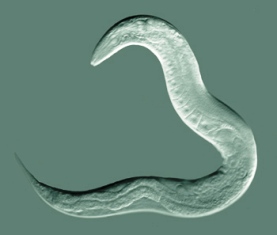- Series:Animals, Transcript English
Job 36:3
“I will fetch my knowledge from afar, and will ascribe righteousness to my Maker.”
When scientists completed the first genetic map of an animal, they found that the results have the signature of our Creator all over them. This animal is the nematode, a very small worm. Even though it has only about 1,000 cells, it is very much like more complex animals. It has a nervous system, a brain, and it reproduces sexually. Scientists picked the species because, being transparent, it would be easier to work with.
 Scientists had thought that the six-chromosome worm would have about 6,000 genes. But after they examined the 97 million bases in its DNA, they discovered that it has about 20,000 genes. They believe that about 3,000 of those genes are essential for all animal and human cells. This means that as scientists learn about these genes, they will also be gaining knowledge about those same genes in our bodies. The most important genes are clustered in the center of each chromosome, while the less essential genes are positioned at the end of each chromosome. They noted that the most important of the genes have more protection in the center of the chromosome.
Scientists had thought that the six-chromosome worm would have about 6,000 genes. But after they examined the 97 million bases in its DNA, they discovered that it has about 20,000 genes. They believe that about 3,000 of those genes are essential for all animal and human cells. This means that as scientists learn about these genes, they will also be gaining knowledge about those same genes in our bodies. The most important genes are clustered in the center of each chromosome, while the less essential genes are positioned at the end of each chromosome. They noted that the most important of the genes have more protection in the center of the chromosome.
Not only is the genetic code of this nematode much more complex than originally thought, but also it is elegantly designed. The genetic code itself is a sophisticated information system which could never have come about by chance. But now we learn that our all wise Creator has also given special protection to the most essential of our genes by placing them in the middle of the chromosomes. The more we learn about how we are made, the more of the glory of our Creator we see in His excellent work.
Prayer:
Father, I thank You that we are so wondrously made. Help me never fear that new knowledge will take Your glory away. Amen.
Notes:
J. Travis, “Worm Offers the First Animal Genome,” Science News, December 12, 1998, v. 154, p. 372. Photo: Caenorhabditis elegans, a species of nematode or roundworm. Courtesy of Bob Goldstein. Licensed under the Creative Commons Attribution-Share Alike 3.0 Unported license.
